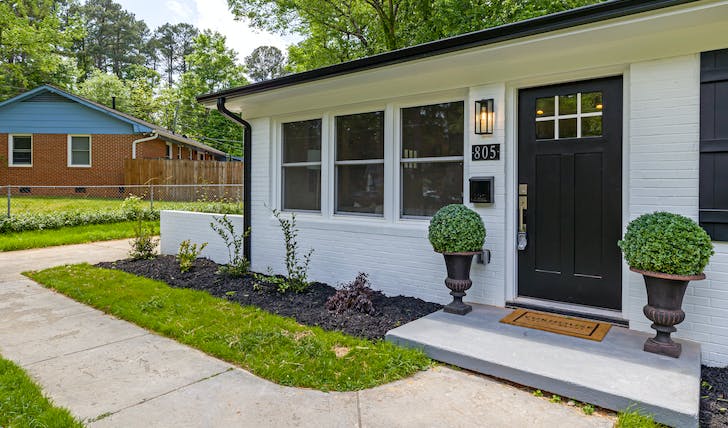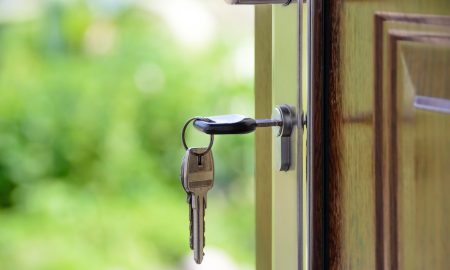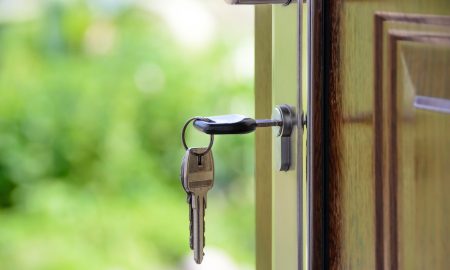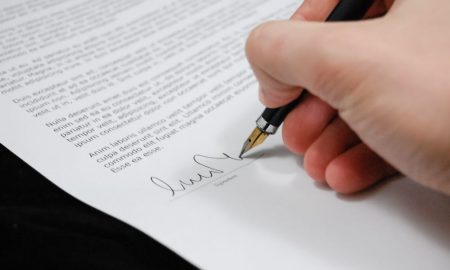
Everything You Need to Know About Declaration of Trust & Property

Owning property, especially with other individuals, often involves navigating a complex legal landscape. A key component of this landscape is the Declaration of Trust, a critical document in managing joint property ownership.
In this article, we will delve into what a Declaration of Trust entails and what its importance is. Most importantly, we will see how it ensures safety and security in property ownership.
What Is the Declaration of Trust?
A Declaration of Trust is a legal document that specifies the ownership proportions and responsibilities of each party in a jointly owned property. It is like a blueprint that clarifies how the property’s ownership is divided.

Pixabay / Pexels / At its core, a Declaration of Trust is a legal document that specifies the ownership and obligations of each party involved in owning a property.
It details the financial obligations of each party and the procedure for any future changes in ownership.
Why a Declaration of Trust Is Important
The primary role of a Declaration of Trust is to prevent misunderstandings and disputes among co-owners. By clearly outlining each person’s stake and responsibilities, it minimizes the potential for conflict.
Plus, it serves as a protective measure for each co-owner. Thus, it ensures that their financial and non-financial contributions are formally recognized and safeguarded.
However, in situations where the property needs to be sold or if an owner wants to exit the arrangement, the Declaration of Trust offers a predefined route for these processes, making transitions smoother and less contentious.

Adam / Pexels / A Declaration of Trust is only safe and protected if it is adaptable and legally binding.
How Safe Is a Declaration of Trust
The strength of a Declaration of Trust lies in its legally binding nature. It is a formal agreement that courts recognize and can enforce. Thus, this means that in the event of a dispute or a breach of the agreement, owners have legal recourse to uphold their rights as outlined in the document.
Another safety feature is its adaptability. As circumstances change, owners can amend the Declaration of Trust, provided all parties agree. Thus, this flexibility ensures that the document remains relevant and protective of each party’s interests over time.
Is Professional Assistance Necessary?
Safety in a Declaration of Trust also comes from professional drafting. So, it is advisable to have the document drafted or reviewed by a legal professional specializing in property law.
Consequently, this ensures that all legal bases are covered and that the document is tailored to the specific needs and circumstances of the property owners.

Curtis / Pexels / To make the most out of your Declaration, include a mechanism for resolving any disagreements, potentially saving time and legal costs.
Risk Mitigation
By detailing the outcome of various potential scenarios, such as one owner’s bankruptcy or decision to sell, the Declaration of Trust mitigates risks associated with joint property ownership. Thus, it provides a clear pathway for resolving these issues, protecting the interests of all parties involved.
What to Consider When Creating a Declaration of Trust?
- Detailed Ownership Shares: Specify each owner’s share in the property based on financial contributions or other agreed terms.
- Responsibility Allocation: Clearly define who is responsible for ongoing expenses, maintenance, and mortgage payments.
Apart from that, outline the process if an owner wants to sell their share, including how the property’s value will be assessed and the rights of other owners to buy that share. So, it is recommended to engage a legal professional to ensure the document is comprehensive and legally sound.
More in Legal Advice
-
`
Santo Spirits: Sammy Hagar and Guy Fieri’s Joint Venture
In the world of business partnerships, some combinations might seem unconventional at first glance. But when you delve deeper into the...
November 16, 2023 -
`
Everything You Need to Know About Mortgage Rate Lock
You have probably embarked on the exciting yet nerve-wracking voyage of purchasing a home. Amidst the sea of paperwork, open houses,...
November 9, 2023 -
`
7 Effective Ways to Make Your Business More Sustainable
In an age of rising environmental consciousness, making your business more sustainable isn’t just a trend; it’s a necessity. Sustainable practices...
November 3, 2023 -
`
Housing Market Going Up? Then Why Not Rent?
“Buy a house! It is the best investment!” How many times have you heard that? Probably enough to make a drinking...
October 29, 2023 -
`
Surprising! Celebs Who You Didn’t Know Had a Master’s Degree
When it comes to celebrities, we often associate them with glitz, glamour, and blockbuster movies. But did you know that some...
October 17, 2023 -
`
Navigating the Housing Maze: The 7% Mortgage Rate Quandary
If there is one thing that this year has thrown our way (apart from those fascinating tech gadgets we did not know...
October 12, 2023 -
`
Where to Buy a House in the U.S With a $100K Salary
Got a cool $100,000 annual paycheck in your pocket? Cheers to that accomplishment! With such a financial cushion, dreams of homeownership...
October 6, 2023 -
`
The “Grave” Housing Crisis Forcing U.S. Homeowners to Sell Their Houses
Every culture has its dreams and aspirations. For those living in the United States, it has traditionally been an idyllic house, spacious and...
October 1, 2023 -
`
Why Private Equity is Betting Big on Hollywood
Hollywood has long been a glamorous yet unpredictable industry. But what is new in Tinseltown? Private equity investments. Yes, that is right!...
September 19, 2023















You must be logged in to post a comment Login